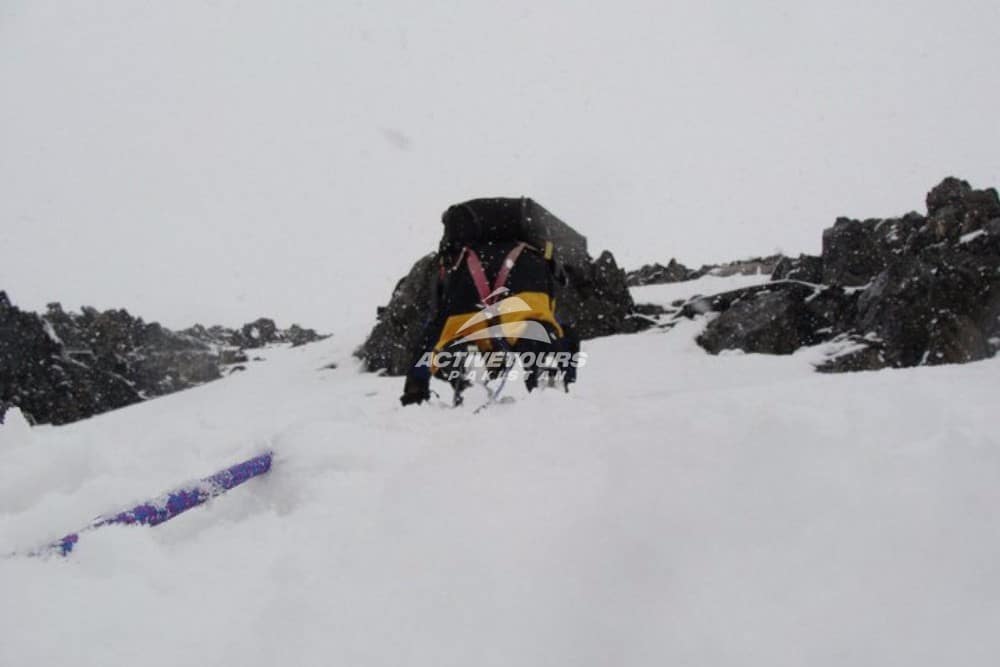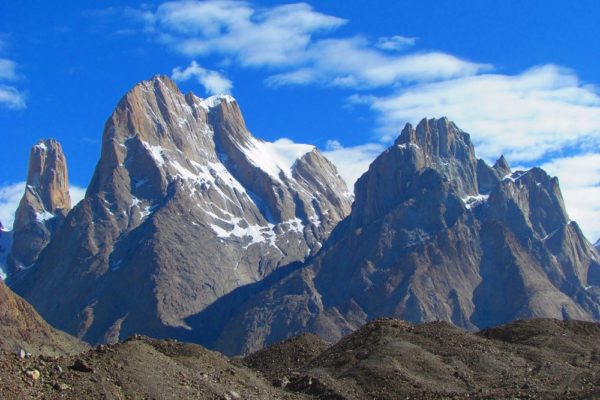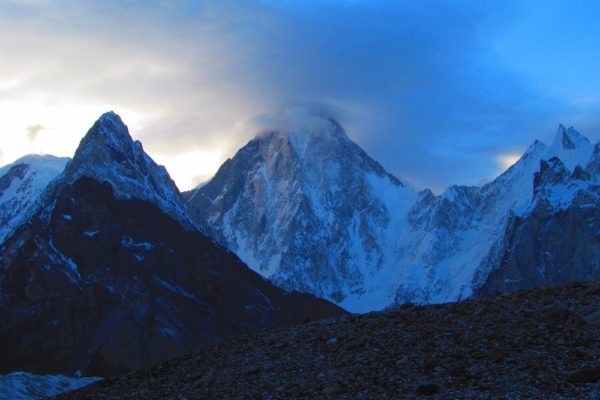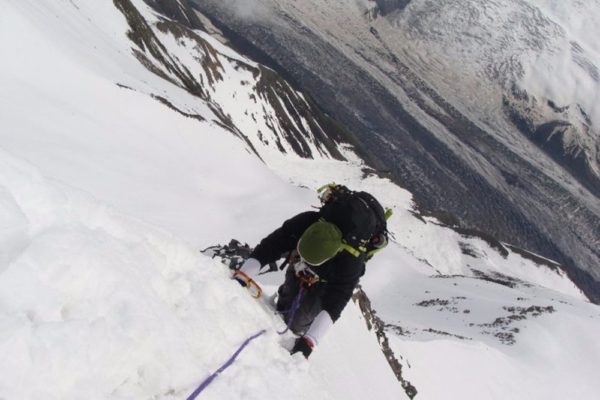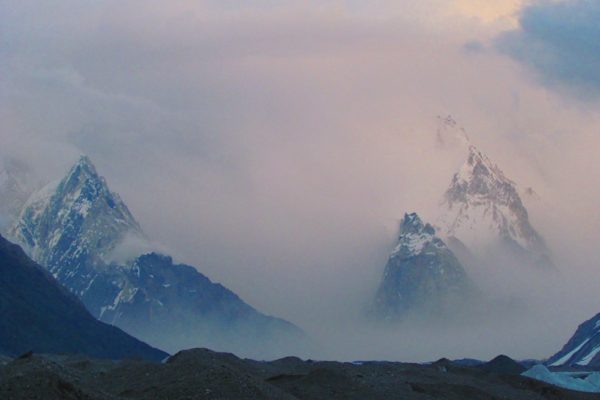Gasherbrum means shining wall. This refers to 3050m/10,000 ft pale limestone walls of the great trapeze shaped Gasherbrum-IV peak.
There are six Gasherbrum peaks in the Karakorum range. It was Captain Younghusband and his party that in 1889 discovered Gasherbrum glacier.
Subsequently in 1934, an international Himalayan Expedition of G. O. Dyhrenfurth, a German – American geologist-cum-climber, and winner of the 1936 Olympic Gold Medal, visited the area and after doing some photographic work on the Baltoro Glacier, made an attempts on the south-east ridge of Gasherbrum-I peak, which is also called hidden peak (8068m/26,470ft). In 1935, Dr. P. C. Visser, a Dutch, and his party surveyed Gasherbrum Glacier. It was, however, in 1936 that are strong French expedition led by H. de Segogne tried its luck on Gasherbrum – I peak. The party went up to 6,797m/22,300ft where camp 5 was established. Subsequently, the party located a place for camp 6 at 7010m (23000 feet). It was, however, due to continue storm and bad weather that the party was forced to abandon its plan. Two of the Sherpas, out of total of 35, unharmed when they fell down to 1800 feet after being hit by avalanche. The route adopted by the party passed through Srinagar – Zoji Pass – Dras –Kargil – Skardu – Shigar – Askole and Baltoro Glacier. It was, however, an American expedition of Nick Clinch which in 1958 climbed Gasherbrum – I peak. Schoening and Kaufman went to its top.

